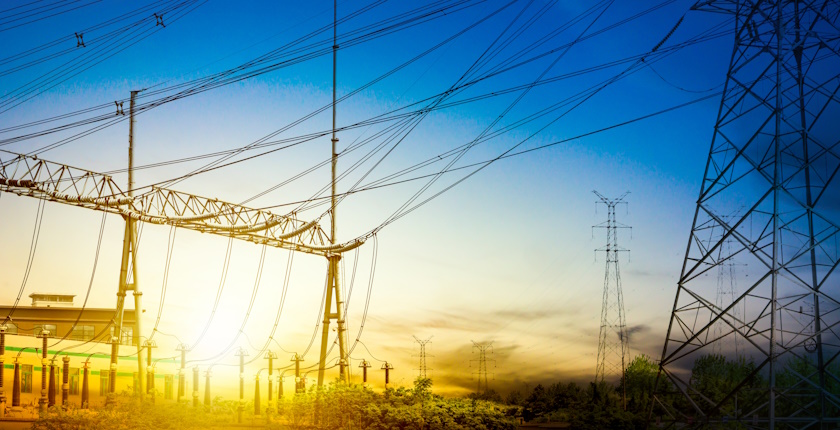
Photo: Evening_tao on Freepik
Outdated and inadequate power grids are one of the most significant stumbling blocks for the energy transition, Rystad Energy’s research results showed. It estimated that USD 3.1 trillion is required for such infrastructure before 2030 to hold global warming at up to 1.8 degrees Celsius.
Norwegian research and business intelligence firm Rystad Energy warned that an additional 18 million kilometers of power grid network would be needed to keep pace with the electrification underway across cities and counties, including new renewable energy capacity and the rapid adoption of electric vehicles.
“Renewable energy developments continue at break-neck speed, with USD 644 billion to be spent on new capacity in 2024, but outdated and inadequate power grids could prove to be a significant stumbling block to the energy transition. If the world is to limit global warming to 1.8 degrees Celsius above pre-industrial levels, USD 3.1 trillion of grid infrastructure investments are required before 2030,” according to the new report.
The figure almost matches the gross domestic product of the United Kingdom and is equivalent to roughly 3% of the world’s GDP.
Rystad Energy scraps 1.5-degree target
Notably, Rystad Energy took 1.8 degrees as a reference point instead of the 1.5-degree ceiling indicated in the 2015 Paris Agreement. The goal, set for the year 2100, seems to have been too ambitious as global efforts in the meantime to eliminate net greenhouse gas emissions were insufficient.
Some scientists even project that the 1.5 level would be provisionally breached already this year. On the other hand, the average temperature would need to hold for several years above it for confirmation and, in theory, it could subsequently be reversed.
In the 1.8-degree scenario, total length of all power grids worldwide would reach 104 million kilometers in 2030 and expand to 140 million kilometers by 2050. It is nearly the distance from Earth to the Sun. Installing 18 million kilometers of power lines translates to nearly 30 million tonnes of copper, a commodity already in short supply, the firm added.
The International Energy Agency earlier estimated the length at 166.4 million kilometers for 2050, but for the 1.5-degree objective.
Many national grids are already too clogged for more solar, wind
Cybersecurity, geopolitics and the increasing priority for securing reliable national energy supply also contribute to the need for grid enhancements, Rystad Energy noted.
Yet, inefficient regulatory frameworks could significantly delay grid developments and, in turn, the energy transition, the report reads. Mature grids have enabled the rapid expansion in solar and wind capacity seen in recent years, but many national grids are now near or at the point where further connections cannot be made without upgrading or expanding them, senior analyst Edvard Christoffersen stressed.
The transmission grid now comprises six million kilometers of high-voltage lines, over 70 kV. The much larger distribution grid consists of around eight million kilometers of medium-voltage (10 kV to 70 kV) lines and a colossal network of low-voltage lines, traversing about 72 million kilometers, reaching households in all corners of the world.
Asia is set to contribute more than half of global additions this decade, with China and India leading the way as the world’s first- and third-largest power consumers.
Rystad Energy predicts global grid investments would reach USD 374 billion in 2024.
Alternatives to grid expansion
Copper is primarily used as the conductor in underground distribution, transmission and subsea cables, while overhead lines use aluminum. Although aluminum is predominantly used in overhead lines, it can be substituted as a conductor in underground lines, the report adds.
Demand for copper and aluminum is expected to surge by almost 40% by the end of the decade, but grids are not the main driver. They are also vital to myriad other applications within the construction, transportation, renewables and consumer products industries. Grids only account for roughly 14% of copper demand globally, or about four million tonnes in 2024.
Implementation of large-scale battery storage can soften intermittency issues
Lengthening the network is necessary to support intermittent and remote renewable power generation and to connect new industrial, commercial and residential areas, but alternatives to meet growing power demand also exist. Implementation of large-scale battery storage can mitigate intermittency issues associated with renewables and allow for higher average grid loads, reducing the need for new lines.
Overhauls and upgrades of the existing grid can increase the capacity per kilometer and digitalization can free up capacity by solving flexibility issues. At the same time, distributed energy sources such as rooftop solar can reduce the need for new lines. What is clear is that the world’s current grid infrastructure does not meet the demands of the future energy system, Rystad’s researchers pointed out.


















Be the first one to comment on this article.